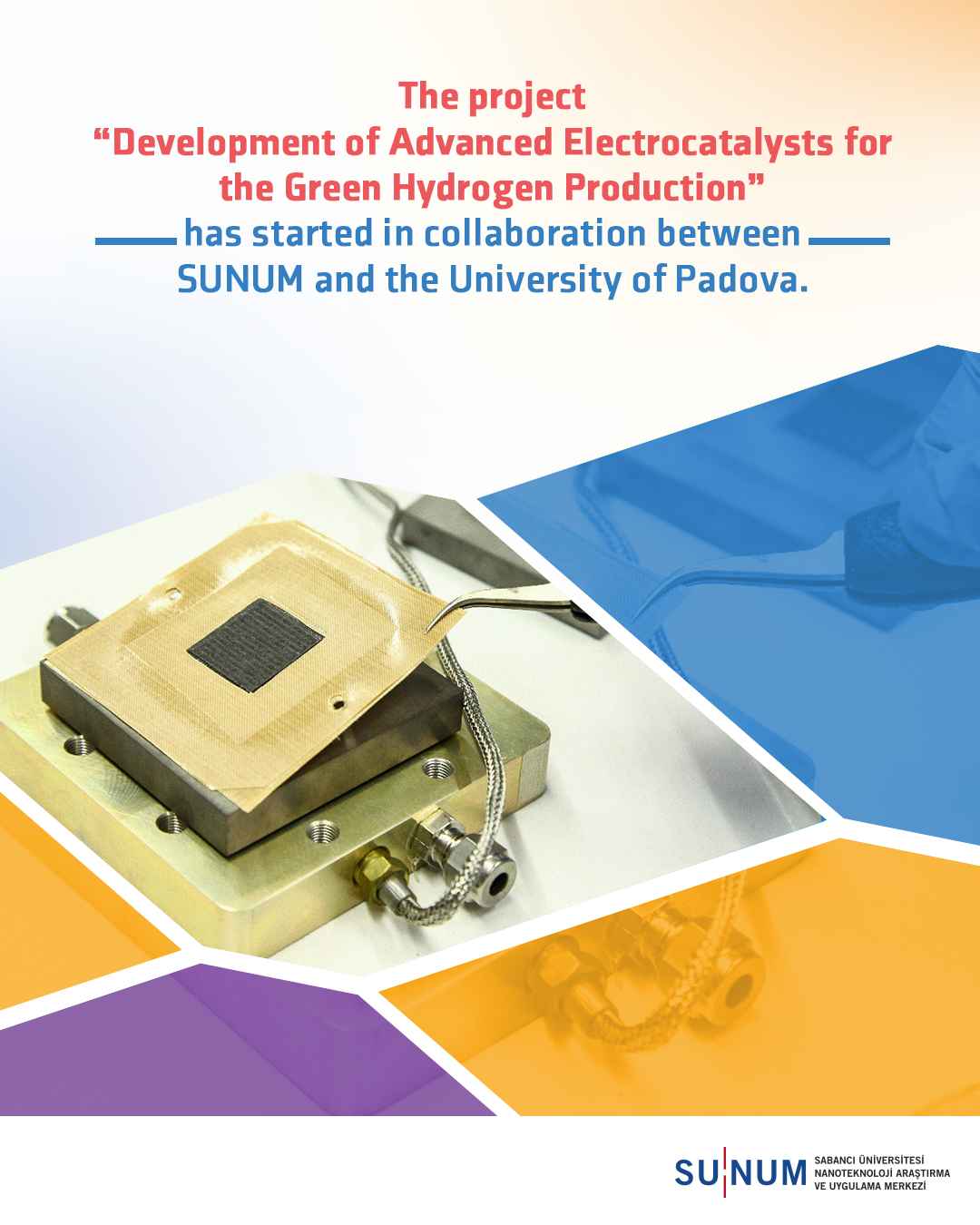“Development of Advanced Electrocatalysts for the Oxygen Evolution Reaction in Alkaline Water Electrolysis for Green Hydrogen Production” Project
The project titled “Development of Advanced Electrocatalysts for the Oxygen Evolution Reaction in Alkaline Water Electrolysis for Green Hydrogen Production” has been launched through a collaboration between the University of Padova and the Sabancı University Nanotechnology Research and Application Center (SUNUM).
This 18-month project aims to develop innovative catalyst materials that provide high efficiency and long-term durability for the oxygen evolution reaction (OER) — a critical step in sustainable green hydrogen production. Through this effort, hydrogen production is expected to become more economical, reliable, and environmentally friendly.
The expected outcome of the project is that the developed electrocatalysts will exhibit high performance and long-term stability during water electrolysis in alkaline media for green hydrogen generation. The project will therefore enhance efficiency, optimize energy consumption, and strengthen the industrial-scale reliability of hydrogen production systems.
The collaboration between SUNUM and the Department of Industrial Engineering at the University of Padova will deepen the scientific scope of the project, foster knowledge exchange, and create an environment for future research collaborations. This will accelerate the transfer of developed technologies to both academic and industrial applications.
Within the scope of the project, the advanced research infrastructure of SUNUM will be utilized to conduct comprehensive investigations into the structural, morphological, and electrochemical properties of the developed electrocatalysts. In particular, the Measurement, Characterization and Imaging Laboratories and the Energy and Electrochemistry facilities will play a critical role in evaluating the performance and durability of these next-generation electrocatalysts.
The project will be led by SUNUM part-time researcher Prof. Selmiye Alkan Gürsel and Prof. Vito di Noto from the Department of Industrial Engineering at the University of Padova.

